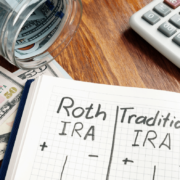TAKING ADVANTAGE OF BACK-DOOR ROTH IRAS
Article Highlights:
- Roth IRA High Income Phaseout
- Traditional-to-Roth IRA Conversions
- Non-deductible Traditional IRA Contributions
- Back-door Roth IRA
- Pitfall of Traditional-to-Roth Conversions
If you are a high-income taxpayer and would like to contribute to a Roth IRA but cannot because of income limitations, there is a work-around that will allow you to fund a Roth IRA.
High-income taxpayers are limited in the annual amount they can contribute to a Roth IRA. In 2016, the allowable contribution phases out for joint-filing taxpayers with an AGI between $184,000 and $194,000 (or an AGI between $0 and $9,999 for married taxpayers filing separately). For unmarried taxpayers, the phaseout is between $117,000 and $132,000. Once the upper end of the range is reached, no contribution is allowed for the year.
However, those AGI limitations can be circumvented by what is frequently referred to as a back-door Roth IRA. Here is how a back-door Roth IRA works:
2. Then, since the law allows an individual to convert a traditional IRA to a Roth IRA without any income limitations, you now convert the non-deductible Traditional IRA to a Roth IRA. Since the Traditional IRA was non-deductible, the only tax related to the conversion would be on any appreciation in value of the Traditional IRA before the conversion is completed.
Potential Pitfall – There is a potential pitfall to the back-door Roth IRA that is often overlooked by investment counselors and taxpayers alike that could result in an unexpected taxable event upon conversion. For distribution or conversion purposes, all of your IRAs (except Roth IRAs) are considered as one account and any distribution or converted amounts are deemed taken ratably from the deductible and non-deductible portions of the traditional IRA, and the portion that comes from the deductible contributions would be taxable.
This may or not may affect your decision to use the back-door Roth IRA method but does need to be considered prior to making the conversion.
There is a possible, although complicated, solution. Taxpayers are allowed to roll over or make a trustee-to-trustee transfer of IRA funds into employer qualified plans if the employer’s plan permits. If the rollover or transfer to the qualified plan is permitted, such rollovers or transfers are limited to the taxable portion of the IRA account, thus leaving behind the non-taxable contributions, which can then be converted to a Roth IRA without any taxability.
Please call this office if you need assistance with your Roth IRA strategies or need assistance in planning traditional -to -Roth IRA conversions.








Leave a Reply
Want to join the discussion?Feel free to contribute!